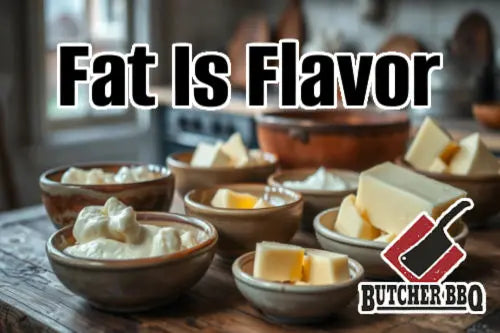
Smoking with Tallow, Lard, and Butter: Which Fat Reigns Supreme?
As a seasoned BBQ enthusiast, I've always been fascinated by the art of smoking meats. From the rich, smoky flavors to the melt-in-your-mouth tenderness, there's nothing quite like the experience of a perfectly smoked brisket or a rack of fall-off-the-bone ribs. But as I've delved deeper into the world of BBQ, I've come to realize that the secret to truly exceptional smoked meats lies not just in the wood chips or the rubs, but in the fats we use to baste and baste our proteins.
In the world of smoking, the choice of fat can make all the difference. Whether it's tallow, lard, or butter, each has its own unique properties and benefits that can enhance the flavor, texture, and moisture of your smoked creations. So, let's dive in and explore the pros and cons of each, and help you determine which fat reigns supreme for your next smoking session.
Tallow: The Beefy Bliss
Tallow, the rendered fat of beef or mutton, has long been a staple in the world of BBQ. This rich, flavorful fat has a high smoke point, making it an ideal choice for high-heat smoking. When applied to meats like brisket or short ribs, tallow helps to baste the meat, keeping it moist and juicy throughout the long smoking process.
One of the key benefits of using tallow is its ability to impart a deep, beefy flavor to the meat. This makes it a particularly good choice for smoking beef-based proteins, as it helps to amplify the natural flavors of the meat. Additionally, tallow's high smoke point means that it can withstand the intense heat of the smoker without burning or imparting any bitter or acrid flavors.
Lard: The Porcine Powerhouse
Lard, the rendered fat of pork, is another popular choice among BBQ enthusiasts. Like tallow, lard has a high smoke point, making it well-suited for smoking. But beyond its heat-resistant properties, lard also brings a unique flavor profile to the table.
Pork fat has a natural sweetness that can complement the savory, smoky notes of smoked meats. This makes lard an excellent choice for smoking pork-based proteins, such as pulled pork or baby back ribs. The fat also helps to keep the meat moist and tender, ensuring that each bite is a juicy delight.
Butter: The Creamy Contender
While tallow and lard are the traditional go-to fats for smoking, butter has been making a strong case for itself in recent years. With its rich, creamy texture and low smoke point, butter can be used to baste and baste meats, imparting a delicate, buttery flavor that complements the smoky notes.
One of the key advantages of using butter in smoking is its ability to promote a beautiful, glossy sheen on the surface of the meat. This not only makes the final product visually appealing, but it also helps to lock in moisture and create a tender, succulent texture.
The Great Fat Debate: Tallow vs. Lard vs. Butter
Now that we've explored the individual merits of each fat, it's time to pit them against one another and determine which one reigns supreme.
When it comes to flavor, the choice largely depends on the type of meat you're smoking. Tallow's beefy notes make it a natural pairing for beef-based proteins, while lard's porcine sweetness shines with pork. Butter, on the other hand, can be a versatile option, complementing a wide range of meats with its creamy, buttery flavor.
In terms of smoke point and heat tolerance, tallow and lard have the edge, with their high smoke points allowing them to withstand the intense heat of the smoker without burning or imparting any off-flavors. Butter, with its lower smoke point, may require a bit more finesse to prevent it from burning or creating flare-ups.
Finally, when it comes to texture and moisture retention, all three fats excel in their own ways. Tallow and lard help to keep the meat moist and juicy, while butter can impart a rich, velvety mouthfeel.
Mastering the Art of Fat-Based Smoking
Regardless of which fat you choose, there are a few key tips to keep in mind when incorporating them into your smoking process:
- Application Method: Whether you're basting, injecting, or rubbing the fat onto the meat, be sure to apply it evenly to ensure consistent coverage and flavor distribution.
- Temperature Considerations: Pay close attention to the smoke point of your chosen fat and adjust your smoker's temperature accordingly to prevent burning or flare-ups.
- Combining Fats: For the ultimate in flavor and texture, consider combining different fats, such as tallow and butter or lard and butter, to create a custom blend that suits your preferences.
At the end of the day, the best fat for smoking is the one that best complements the meat you're working with and aligns with your personal taste preferences. So, don't be afraid to experiment and find the perfect fat-based smoking technique that works for you.
Happy smoking, my fellow BBQ enthusiasts!




